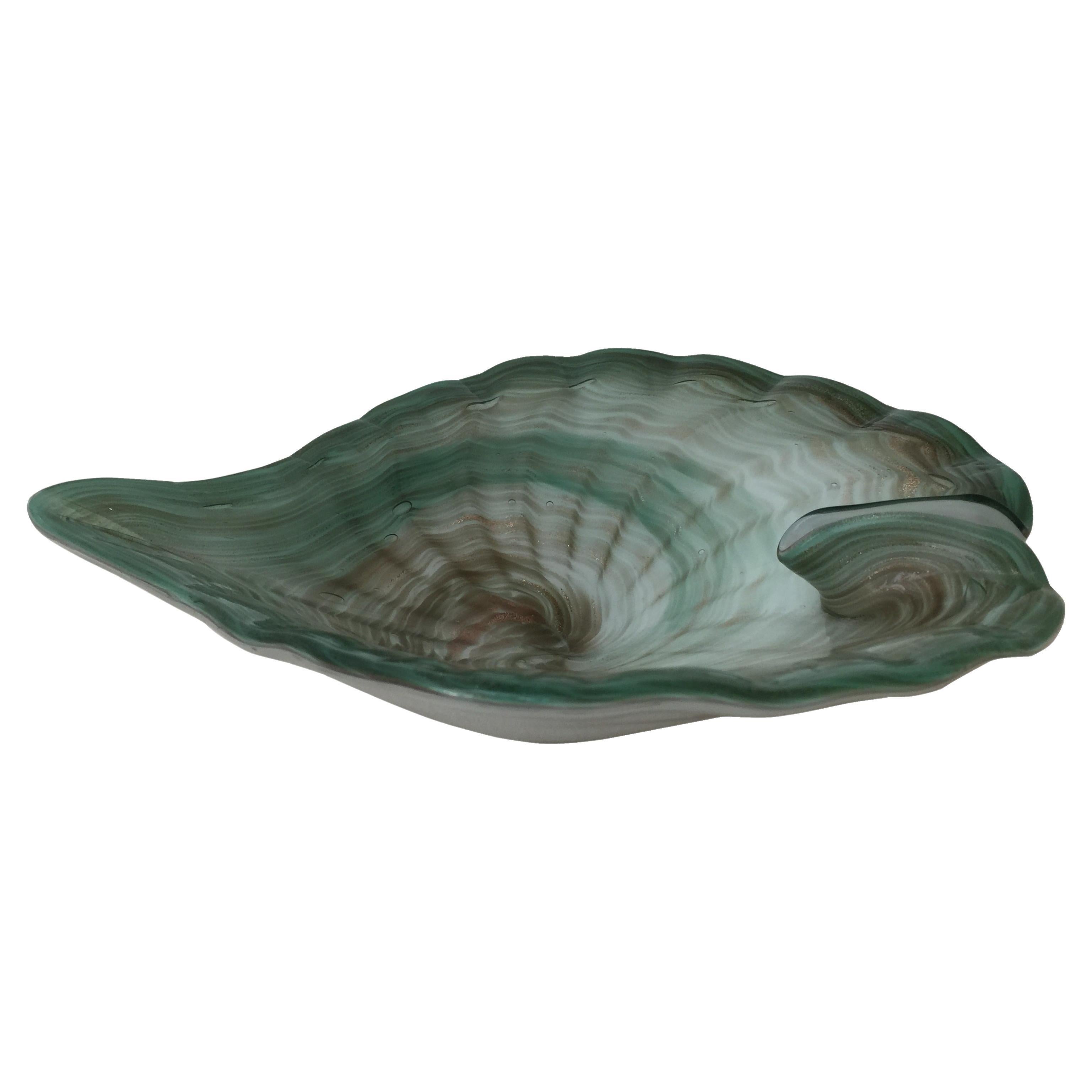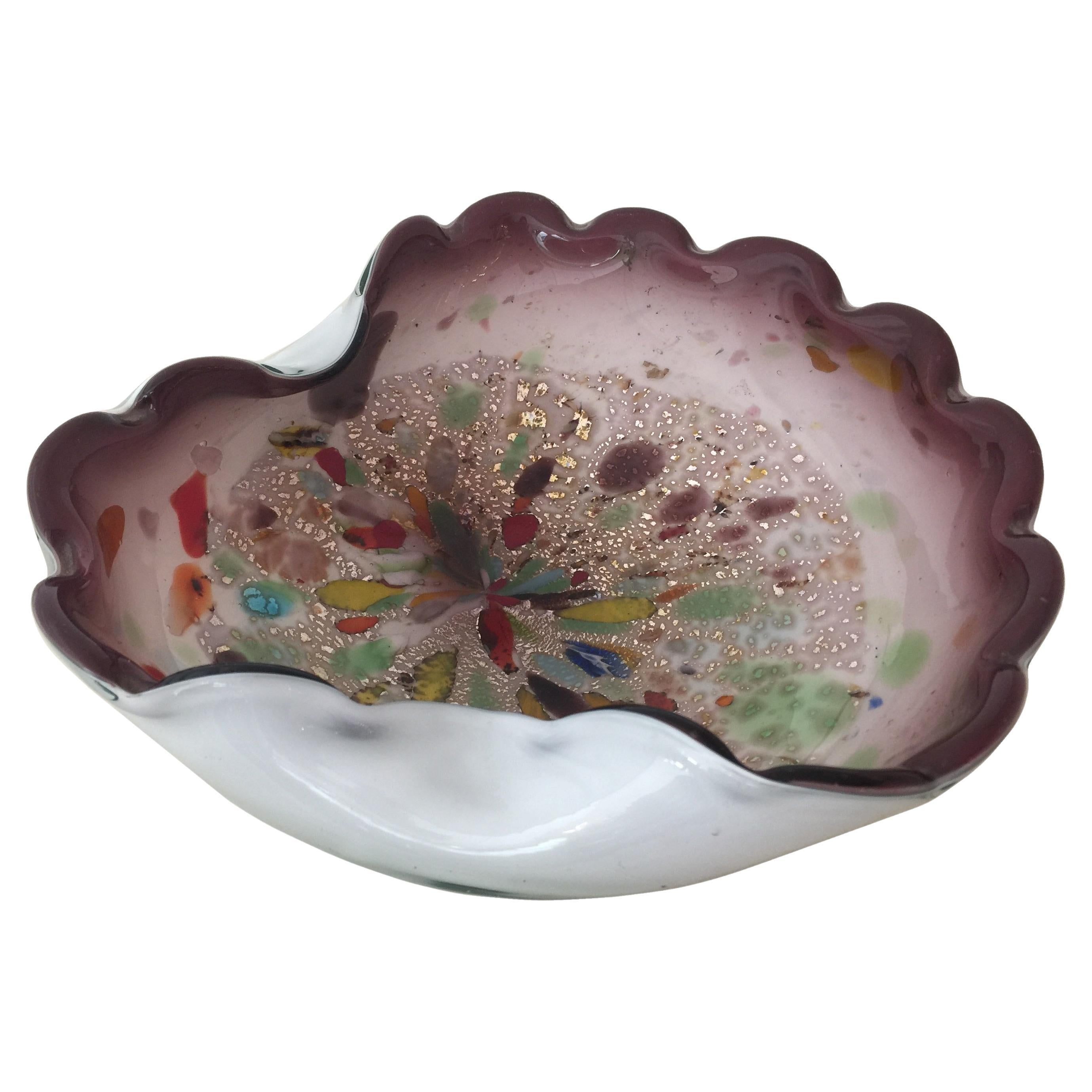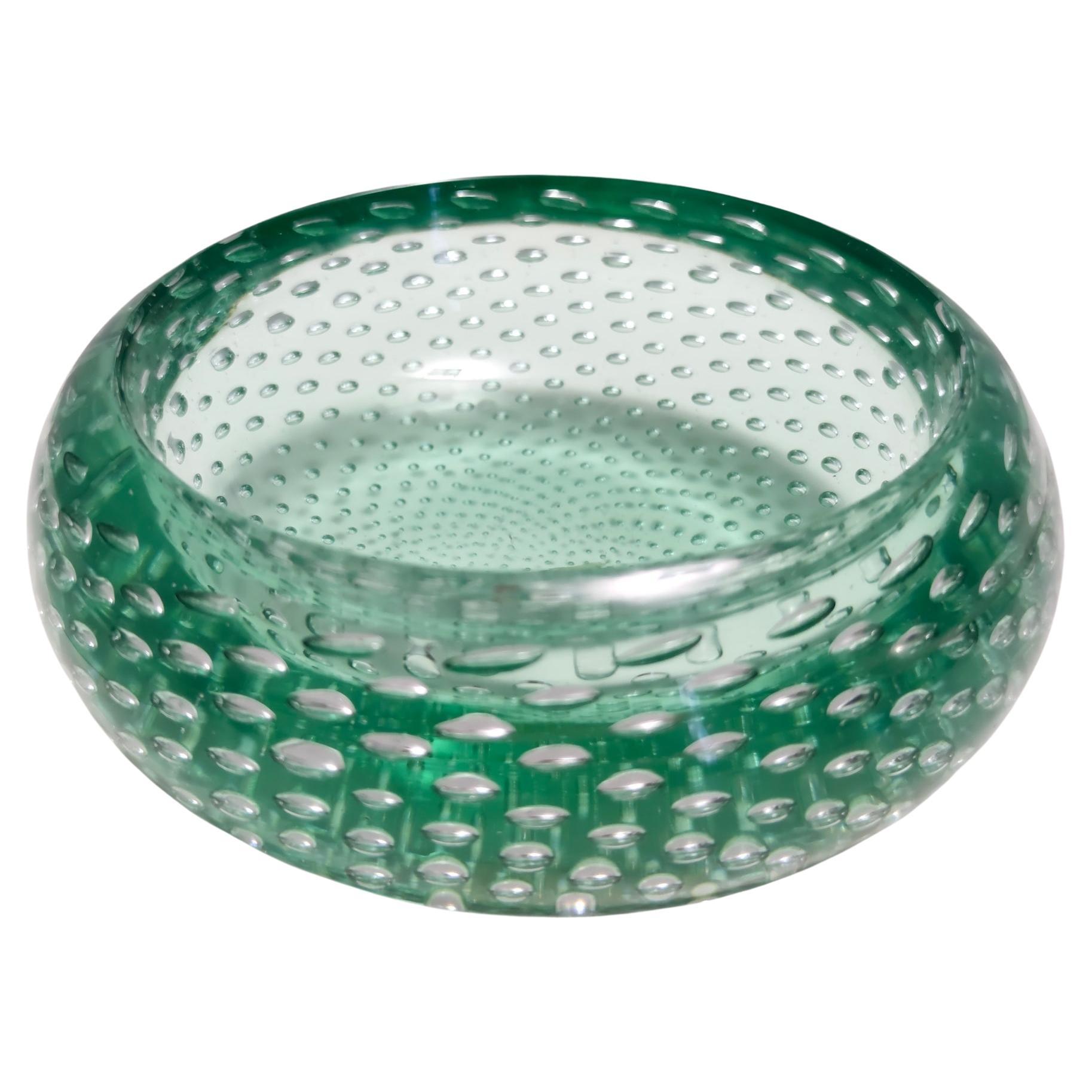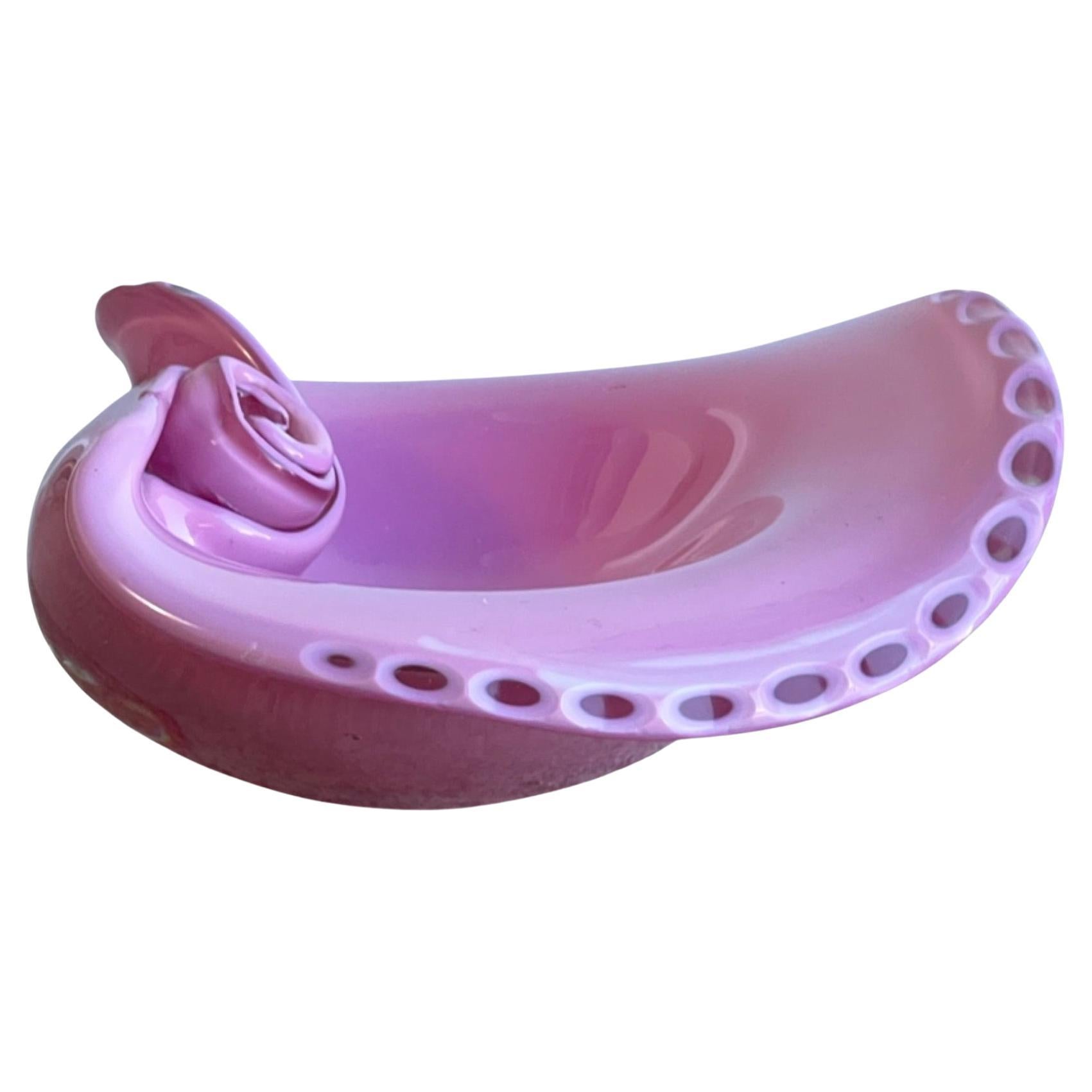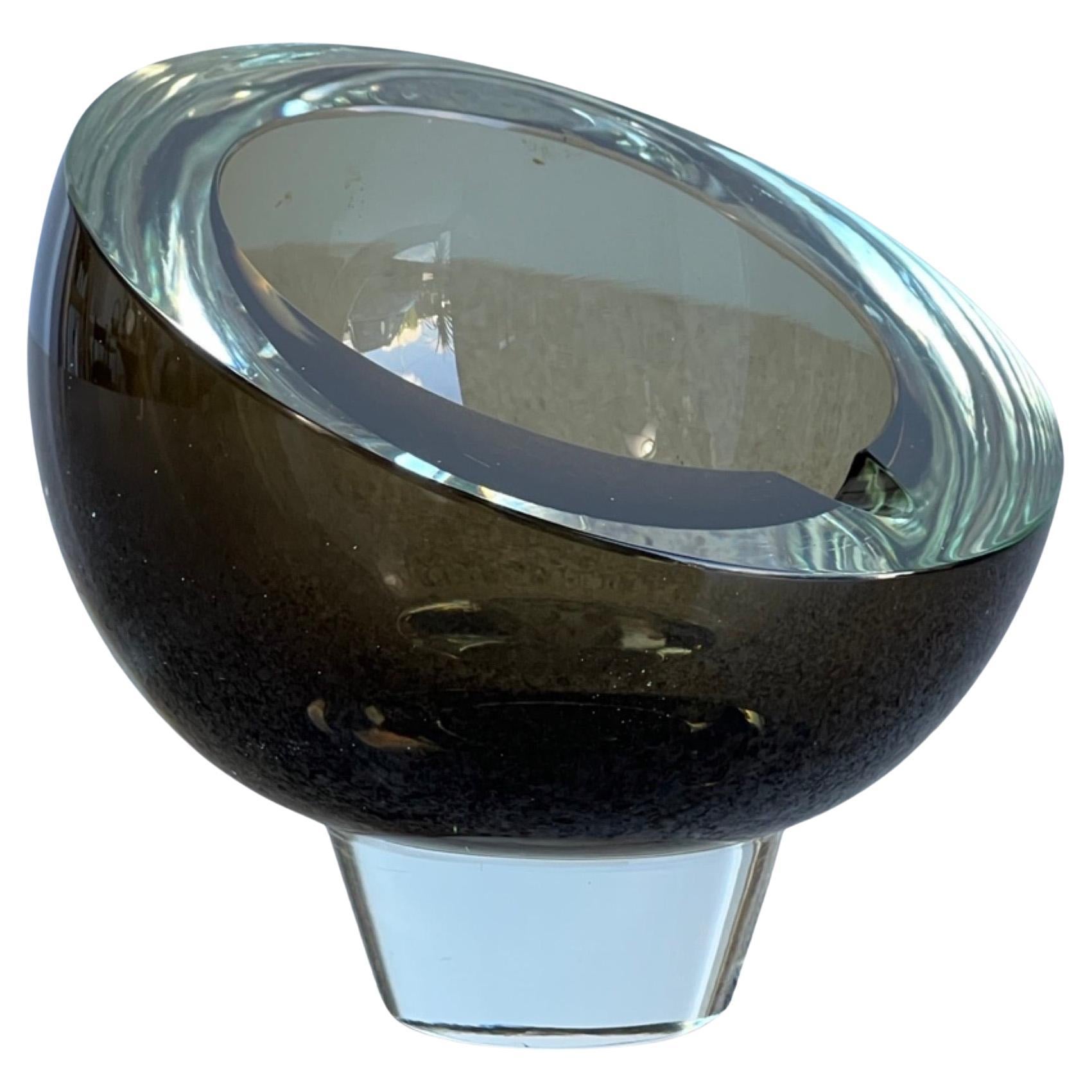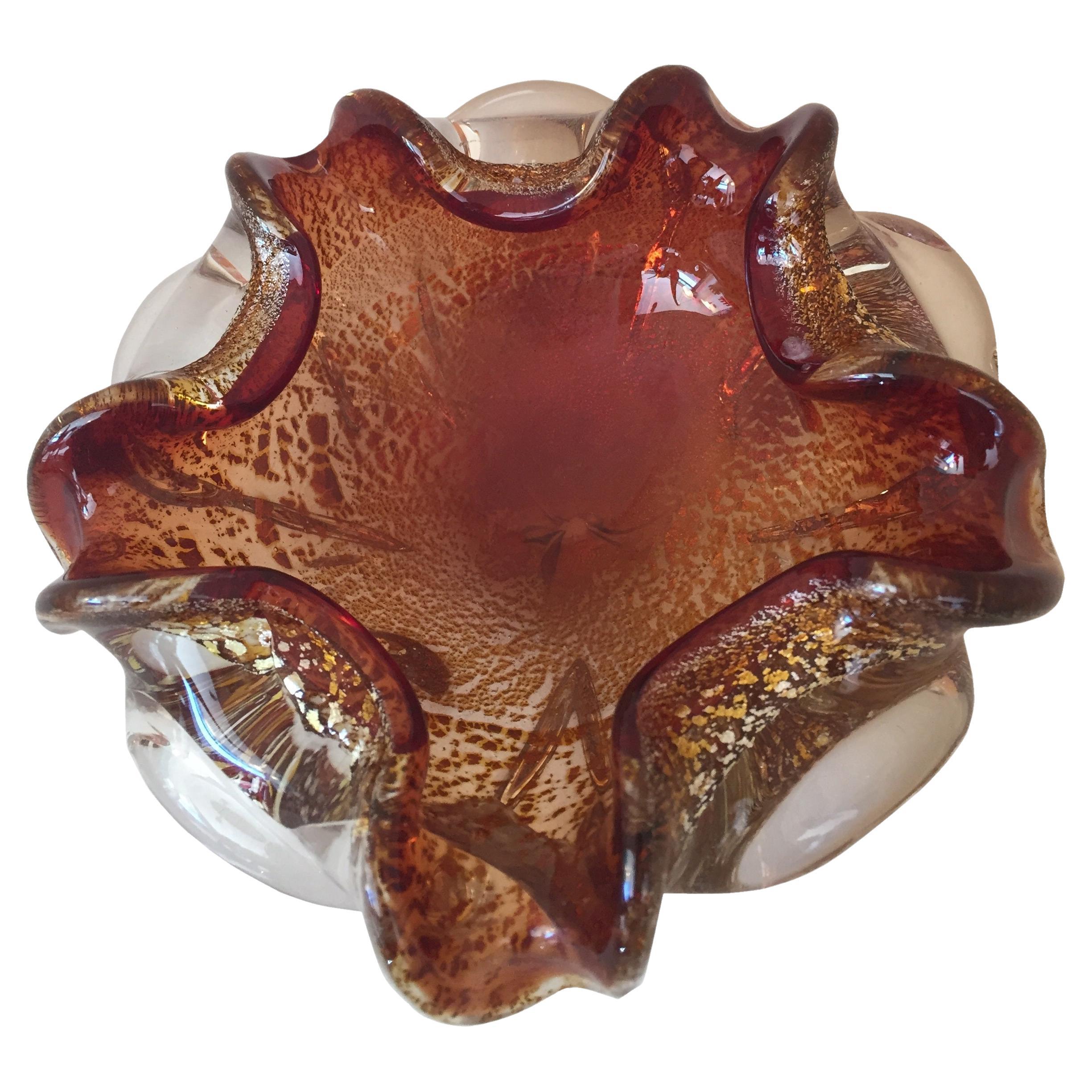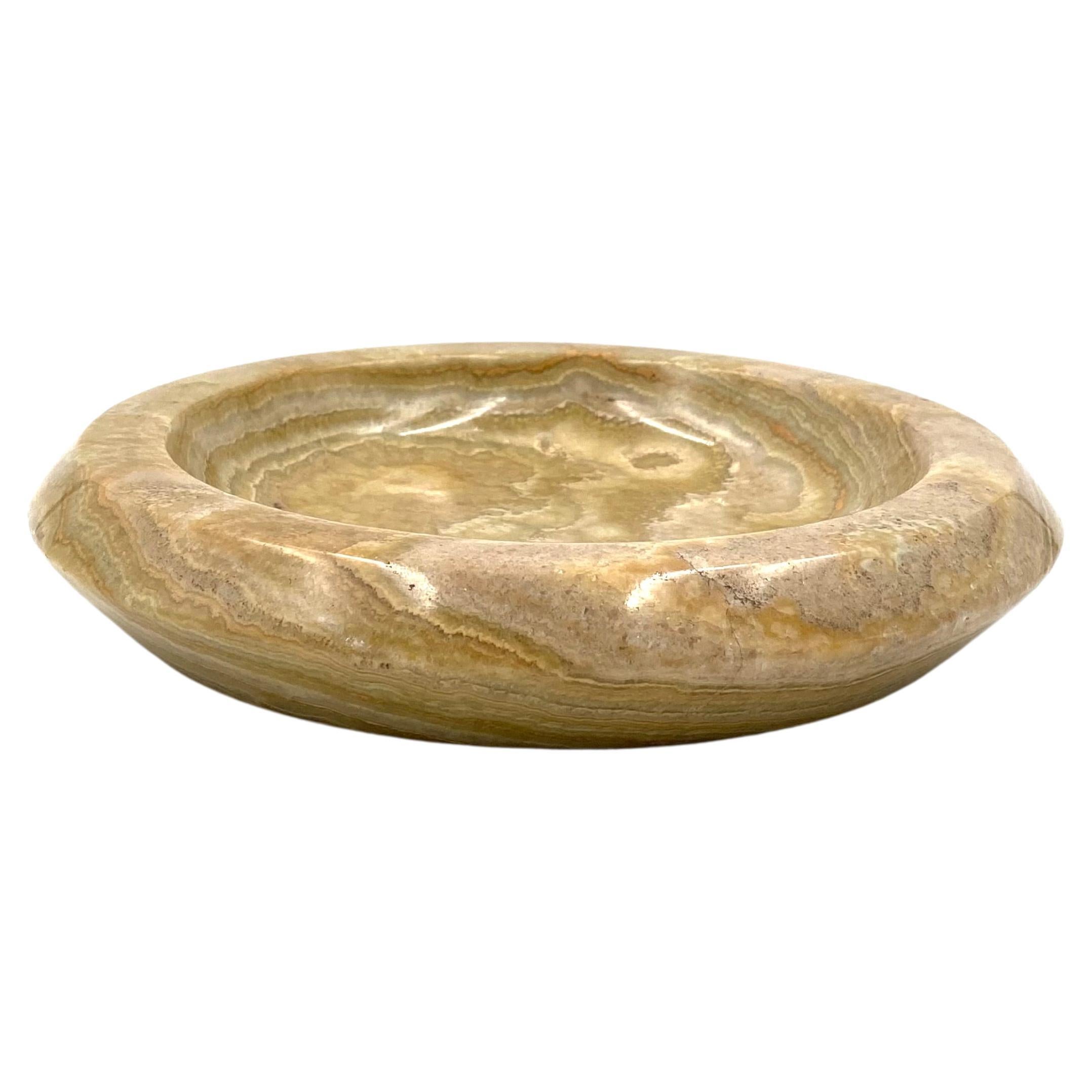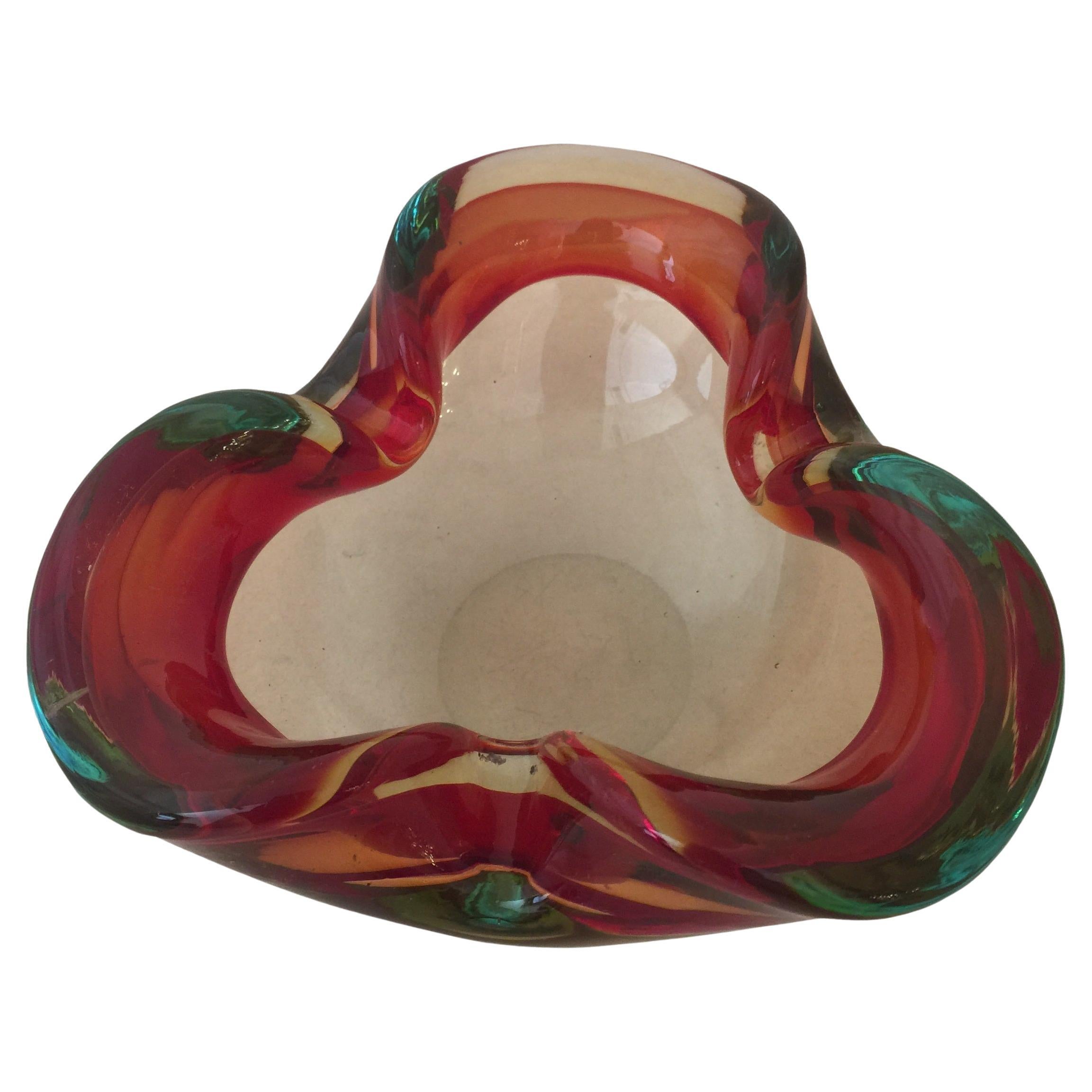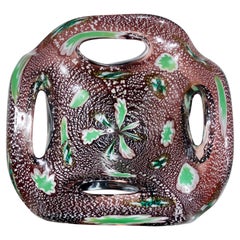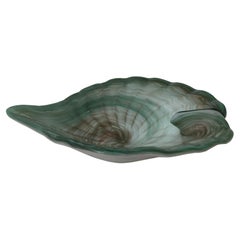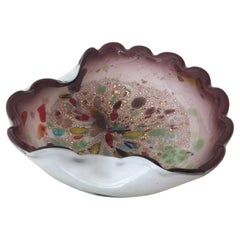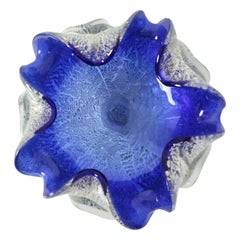
Vintage Blue Murano Glass Ashtray-Catchall Ascribable to Toso with Silver Flakes
View Similar Items
Video Loading
Want more images or videos?
Request additional images or videos from the seller
1 of 13
Vintage Blue Murano Glass Ashtray-Catchall Ascribable to Toso with Silver Flakes
About the Item
- Attributed to:Fratelli Toso (Manufacturer)
- Dimensions:Height: 2.17 in (5.5 cm)Diameter: 5.12 in (13 cm)
- Style:Mid-Century Modern (Of the Period)
- Materials and Techniques:
- Place of Origin:
- Period:
- Date of Manufacture:1950s
- Condition:
- Seller Location:Bresso, IT
- Reference Number:1stDibs: LU2293325799771
About the Seller
5.0
Platinum Seller
These expertly vetted sellers are 1stDibs' most experienced sellers and are rated highest by our customers.
Established in 2011
1stDibs seller since 2016
573 sales on 1stDibs
Typical response time: 3 hours
More From This SellerView All
- Vintage Brown Murano Glass Ashtray / Catchall by Fratelli Toso with MurrinesBy Fratelli TosoLocated in Bresso, LombardyMade in Italy, 1960s. Made in Murano glass with murrines and silver flakes. It is a vintage piece, therefore it might show slight traces of use, but it can be considered as in excel...Category
Vintage 1960s Italian Mid-Century Modern Ashtrays
MaterialsSilver Leaf
$395 Sale Price35% Off - Vintage Black Murano Glass Ashtray - Trinket Bowl by Fratelli TosoBy Fratelli TosoLocated in Bresso, LombardyMade in Italy, 1950s. Made in polychrome Murano glass canes. It is a vintage piece, therefore it might show slight traces of use, but it can be considered as in excellent original c...Category
Vintage 1950s Italian Mid-Century Modern Ashtrays
MaterialsMurano Glass
$430 Sale Price20% Off - Vintage Aquamarine Bullicante Murano Glass Ashtray - Trinket BowlLocated in Bresso, LombardyMade in Italy, 1960s. Made in aquamarine bullicante Murano glass. It is a vintage piece, therefore it might show slight traces of use, but it can be considered as in perfect origina...Category
Vintage 1960s Italian Mid-Century Modern Ashtrays
MaterialsMurano Glass
$334 Sale Price20% Off - Vintage Square Molded Thick Glass Ashtray - Trinket Bowl, ItalyLocated in Bresso, LombardyMade in Italy, 1968. Made in thick molded glass. It is a vintage piece, therefore it might show slight traces of use, but it can be considered as in perfect original condition and r...Category
Vintage 1960s Italian Mid-Century Modern Ashtrays
MaterialsGlass
$202 Sale Price20% Off - Vintage Peach Pink Thick Murano Glass Ashtray, Catchall with Gold Leaf, ItalyBy Alfredo BarbiniLocated in Bresso, LombardyMade in Italy, 1950s - 1960s, in the style of Barbini. Made in thick peach pink Murano glass with gold leaf, slightly iridescent, with a clear iron manufacturing. The technique is ...Category
Vintage 1950s Italian Mid-Century Modern Ashtrays
MaterialsGold Leaf
$553 Sale Price22% Off - Vintage Purple Murano Glass Ashtray-Catchall by Ercole Barovier mod. "Porpora"By Ercole BarovierLocated in Bresso, LombardyMade in Italy, 1950s. Made in purple Murano glass with gold leaf. This is a piece of the "porpora" serie by Ercole Barovier. It is a vintage piece, therefore it might show slight tr...Category
Vintage 1950s Italian Mid-Century Modern Ashtrays
MaterialsGold Leaf
$878 Sale Price33% Off
You May Also Like
- Murano with gold, 1930, Italian, Attributed to Fratelli TosoBy Fratelli TosoLocated in Ciudad Autónoma Buenos Aires, CMurano We have specialized in the sale of Art Deco and Art Nouveau and Vintage styles since 1982. If you have any questions we are at your disposal. Pushing the button that reads 'V...Category
Vintage 1930s Italian Art Deco Centerpieces
MaterialsGold
- Murano, 1930, Italian, Attributed to Fratelli Toso Technical AvventurinaBy Fratelli TosoLocated in Ciudad Autónoma Buenos Aires, CMurano Technical Avventurina : We have specialized in the sale of Art Deco and Art Nouveau and Vintage styles since 1982. If you have any questions we are at your disposal. Pushing the button that reads 'View All From Seller'. And you can see more objects to the style for sale. Fratelli Toso, Venice One of the oldest glass factories established in Murano, Fratelli Toso was founded in 1854 by six brothers who loved the art of glassmaking. With over 150 years of experience in the field, the Toso family improved their techniques and nowadays are one of the top award-winning manufacturers of Murano glass. Technical Avventurina : Avventurina is a Murano glass-making technique developed on Murano island in the 17th century. I was first mentioned in a document dating from 1614 as "a kind of stone with gilt stars inside", at which point it already mesmerized people with the unusual and attractive look. The technique owes its name to the fact that its discovery happened by chance thanks to a lucky coincidence, when a glass artisan is said to have accidentally dropped some metal shavings into the glass mixture. Italians say it happened "all'avventura", which in Italian means "by chance". The first documented recipe for the technique dates from 1644, when Murano master glassmaker Giovanni Darduin described how Avventurina glass should be created. The recipe involves adding various metal oxides such as copper and iron to the hot glass mixture, which will cause tiny particles of the metals to crystallize as the glass mixture cools off. Complicating the process, for such crystallization to occur the furnace had to get fully extinguished, and the metal particles would slowly separate from the glass base over a few days during the natural cooling of the glass. This was a very difficult process from a logistical perspective, since every time a glass furnace got extinguished it caused work to be paused, and re-igniting it was quite a big process, as it took time to fully heat it to the desired temperature. As industrial revolution set foot on Murano in the nineteenth century, the process got a remake. Large volumes of fine Avventurina paste were made and then skillfully stretched into glass canes, which were then re-melted for jewelry-making under a small flame, or for glass blowing. This Avventurina paste received worldwide acclaim and re-ignited the fame of Murano Glass workshops due to its use in Salviati mosaics...Category
Vintage 1930s Italian Art Deco Centerpieces
MaterialsMurano Glass
- Murano, 1930, Italian, Attributed to Fratelli Toso, Technical AvventurinaBy Fratelli TosoLocated in Ciudad Autónoma Buenos Aires, CMurano Technical Avventurina : We have specialized in the sale of Art Deco and Art Nouveau and Vintage styles since 1982. If you have any questions we are at your disposal. Fratelli Toso, Venice One of the oldest glass factories established in Murano, Fratelli Toso was founded in 1854 by six brothers who loved the art of glassmaking. With over 150 years of experience in the field, the Toso family improved their techniques and nowadays are one of the top award-winning manufacturers of Murano glass. Technical Avventurina : Avventurina is a Murano glass-making technique developed on Murano island in the 17th century. I was first mentioned in a document dating from 1614 as "a kind of stone with gilt stars inside", at which point it already mesmerized people with the unusual and attractive look. The technique owes its name to the fact that its discovery happened by chance thanks to a lucky coincidence, when a glass artisan is said to have accidentally dropped some metal shavings into the glass mixture. Italians say it happened "all'avventura", which in Italian means "by chance". The first documented recipe for the technique dates from 1644, when Murano master glassmaker Giovanni Darduin described how Avventurina glass should be created. The recipe involves adding various metal oxides such as copper and iron to the hot glass mixture, which will cause tiny particles of the metals to crystallize as the glass mixture cools off. Complicating the process, for such crystallization to occur the furnace had to get fully extinguished, and the metal particles would slowly separate from the glass base over a few days during the natural cooling of the glass. This was a very difficult process from a logistical perspective, since every time a glass furnace got extinguished it caused work to be paused, and re-igniting it was quite a big process, as it took time to fully heat it to the desired temperature. As industrial revolution set foot on Murano in the nineteenth century, the process got a remake. Large volumes of fine Avventurina paste were made and then skillfully stretched into glass canes, which were then re-melted for jewelry-making under a small flame, or for glass blowing. This Avventurina paste received worldwide acclaim and re-ignited the fame of Murano Glass workshops due to its use in Salviati mosaics...Category
Vintage 1930s Italian Art Deco Centerpieces
MaterialsMurano Glass
- Murano, 1930, Italian, Attributed to Fratelli Toso Technical AvventurinaBy Fratelli TosoLocated in Ciudad Autónoma Buenos Aires, CMurano Technical Avventurina : We have specialized in the sale of Art Deco and Art Nouveau and Vintage styles since 1982. If you have any questions we are at your disposal. Pushing the button that reads 'View All From Seller'. And you can see more objects to the style for sale. Fratelli Toso, Venice One of the oldest glass factories established in Murano, Fratelli Toso was founded in 1854 by six brothers who loved the art of glassmaking. With over 150 years of experience in the field, the Toso family improved their techniques and nowadays are one of the top award-winning manufacturers of Murano glass. Technical Avventurina : Avventurina is a Murano glass-making technique developed on Murano island in the 17th century. I was first mentioned in a document dating from 1614 as "a kind of stone with gilt stars inside", at which point it already mesmerized people with the unusual and attractive look. The technique owes its name to the fact that its discovery happened by chance thanks to a lucky coincidence, when a glass artisan is said to have accidentally dropped some metal shavings into the glass mixture. Italians say it happened "all'avventura", which in Italian means "by chance". The first documented recipe for the technique dates from 1644, when Murano master glassmaker Giovanni Darduin described how Avventurina glass should be created. The recipe involves adding various metal oxides such as copper and iron to the hot glass mixture, which will cause tiny particles of the metals to crystallize as the glass mixture cools off. Complicating the process, for such crystallization to occur the furnace had to get fully extinguished, and the metal particles would slowly separate from the glass base over a few days during the natural cooling of the glass. This was a very difficult process from a logistical perspective, since every time a glass furnace got extinguished it caused work to be paused, and re-igniting it was quite a big process, as it took time to fully heat it to the desired temperature. As industrial revolution set foot on Murano in the nineteenth century, the process got a remake. Large volumes of fine Avventurina paste were made and then skillfully stretched into glass canes, which were then re-melted for jewelry-making under a small flame, or for glass blowing. This Avventurina paste received worldwide acclaim and re-ignited the fame of Murano Glass workshops due to its use in Salviati mosaics...Category
Vintage 1930s Italian Art Deco Centerpieces
MaterialsMurano Glass
- Italian Murano Art Glass AshtrayLocated in Byron Bay, NSWItalian Pink Murano Art glass ashtray 1960s. Rose flower shaped Murano ashtray in bright pink.Category
Vintage 1960s Italian Mid-Century Modern Ashtrays
MaterialsMurano Glass
- Italian Smoked Murano Glass AshtrayLocated in Byron Bay, NSWMid-Century Modern ashtray in Murano glass 1960s. Smoked glass ashtray very modern design and stylish look.Category
Vintage 1960s Italian Mid-Century Modern Ashtrays
MaterialsMurano Glass
Recently Viewed
View AllMore Ways To Browse
Vintage Murano Ashtray Blue
Murano Glass Ashtray Catchall
Retro Glass Ash Tray
Italian Ash Tray
Cigar Ashtray Mid Century
Modernist Ashtray
Pink Ashtray
Retro Cigarette Holders
Mid Century Glass Ashtray Stand
Aubock Ashtray
Carl Aubock Ashtray
Vintage Ceramic Ashtray
Flavio Poli Sommerso Murano Ashtray
Floor Ashtrays
Green Glass Vintage Ashtray
Orange Glass Ashtray
New York Ashtray
Red Murano Glass Ashtray


